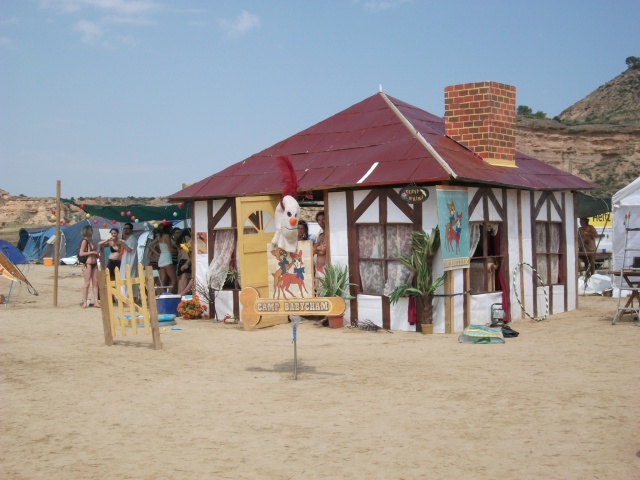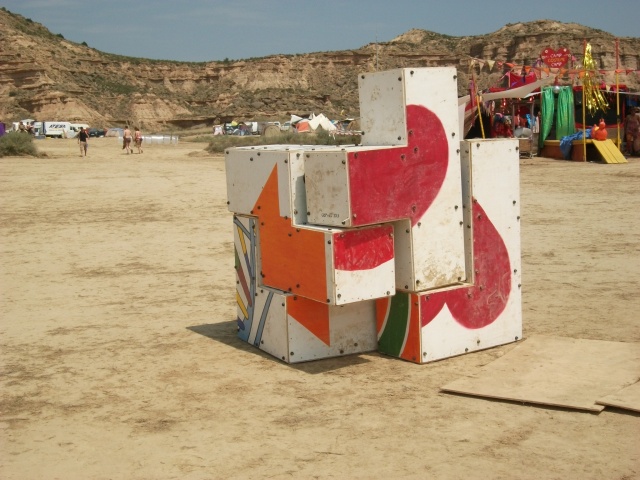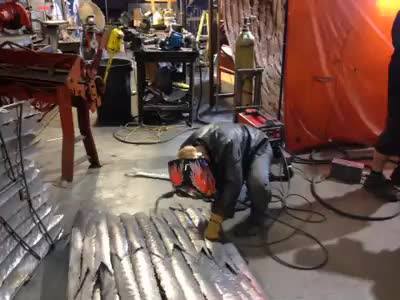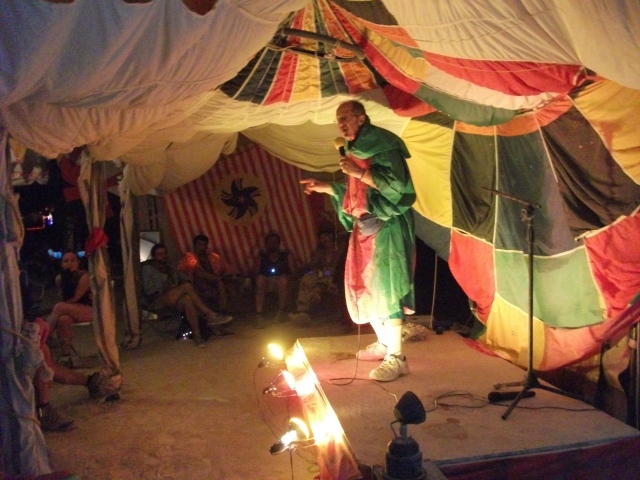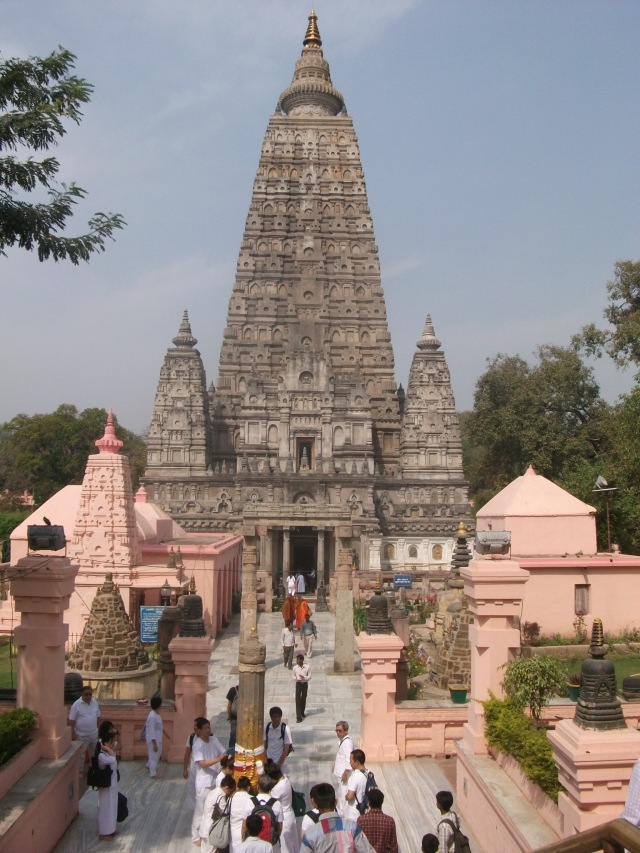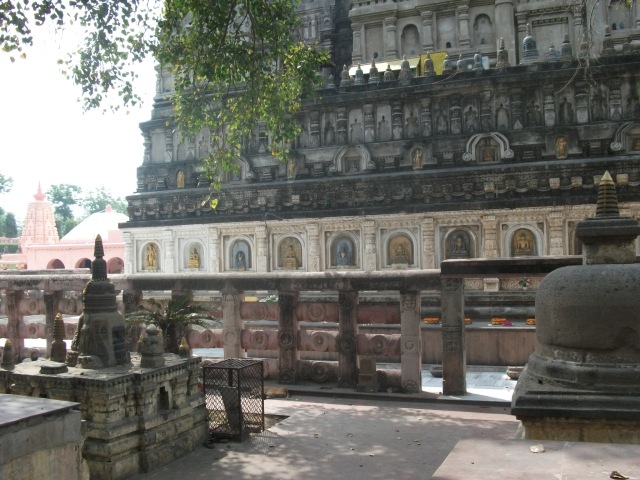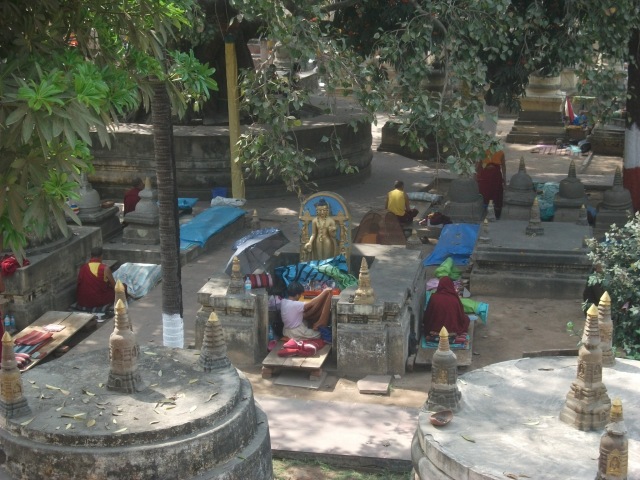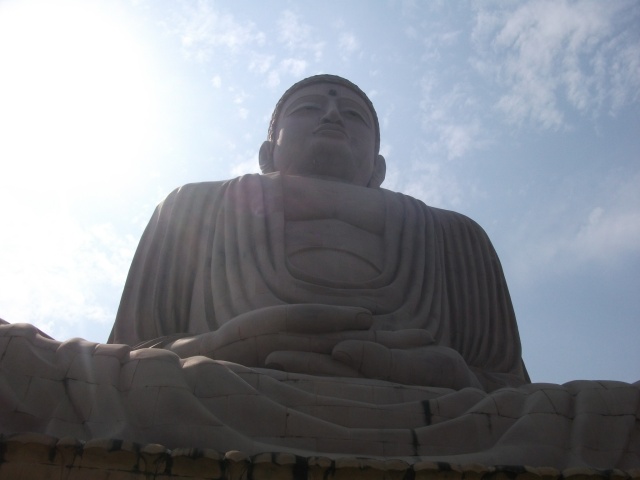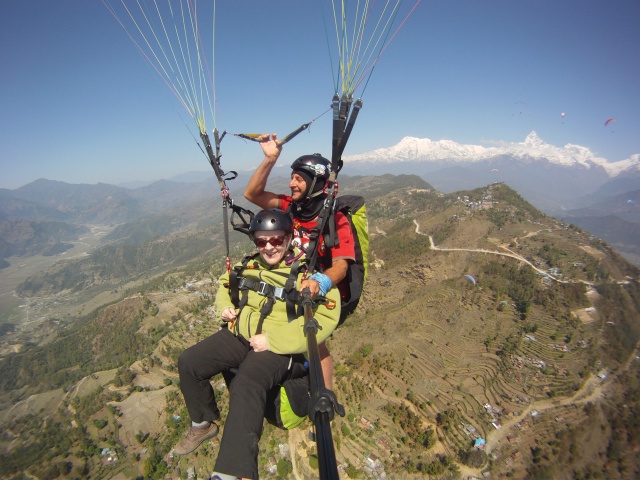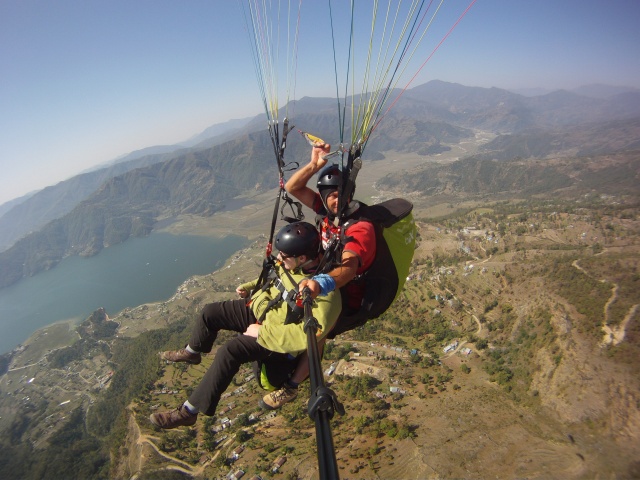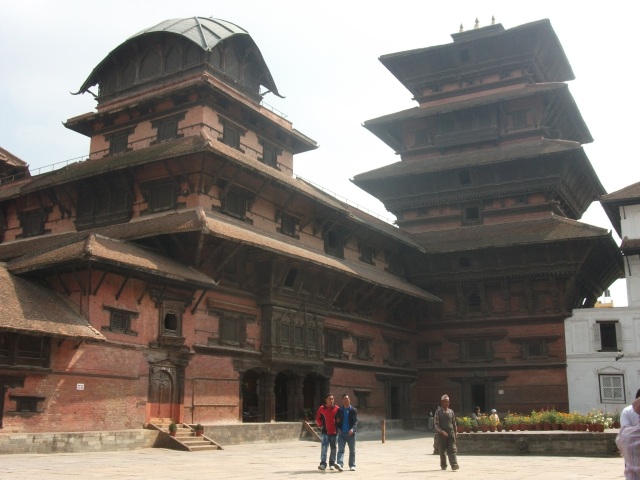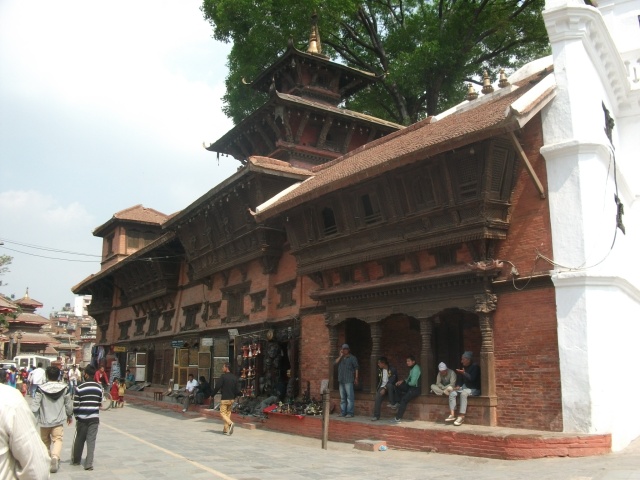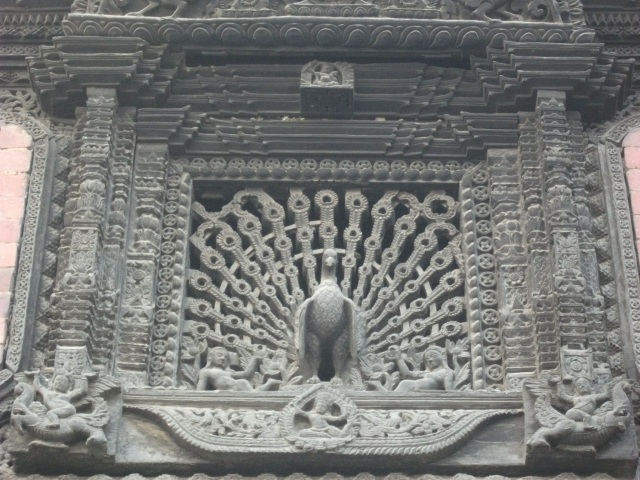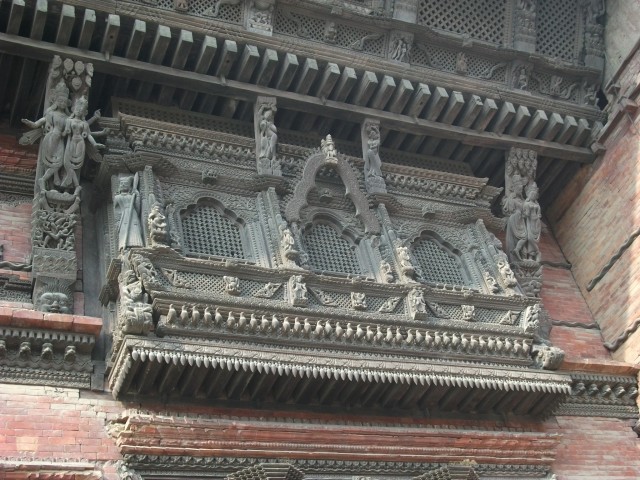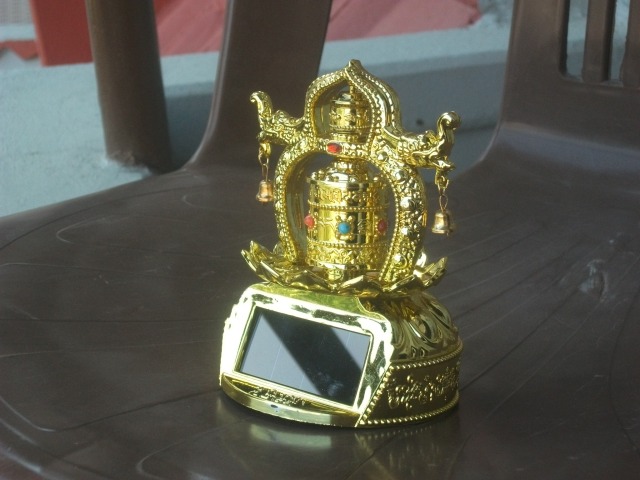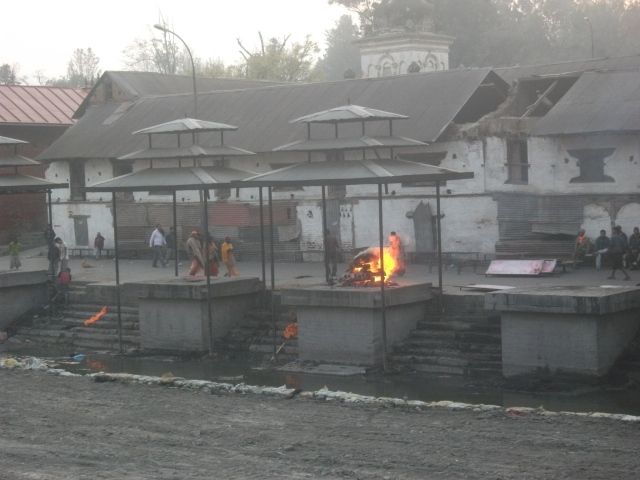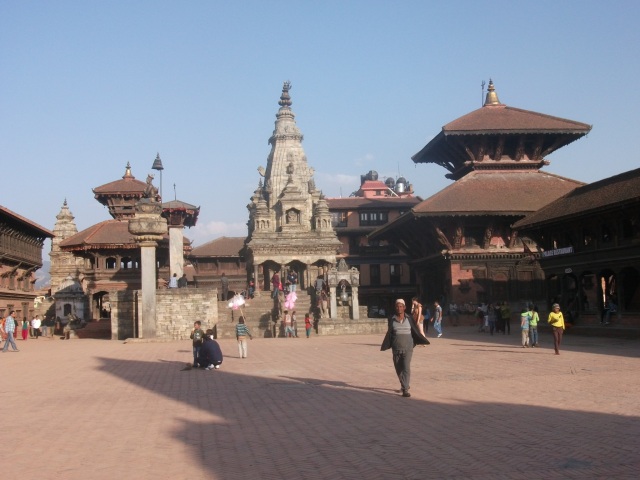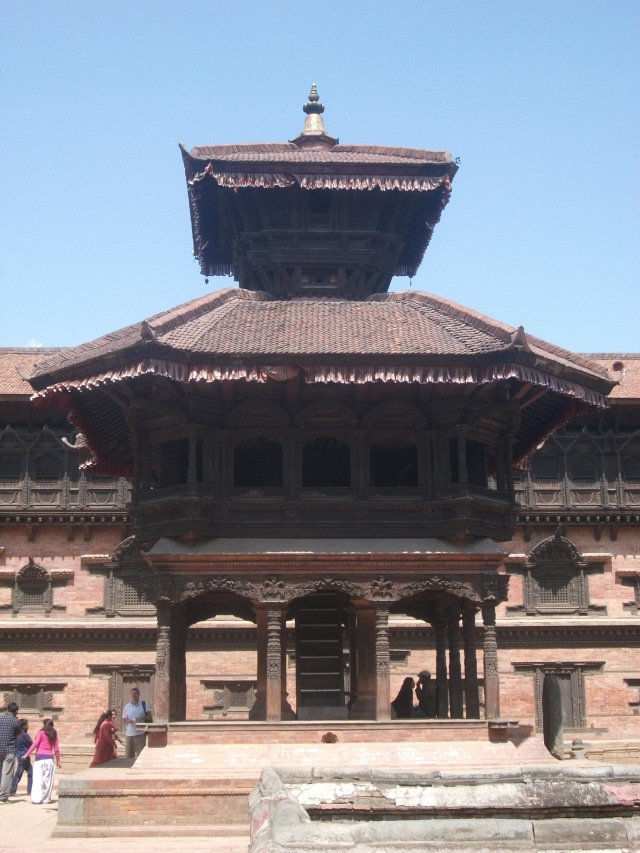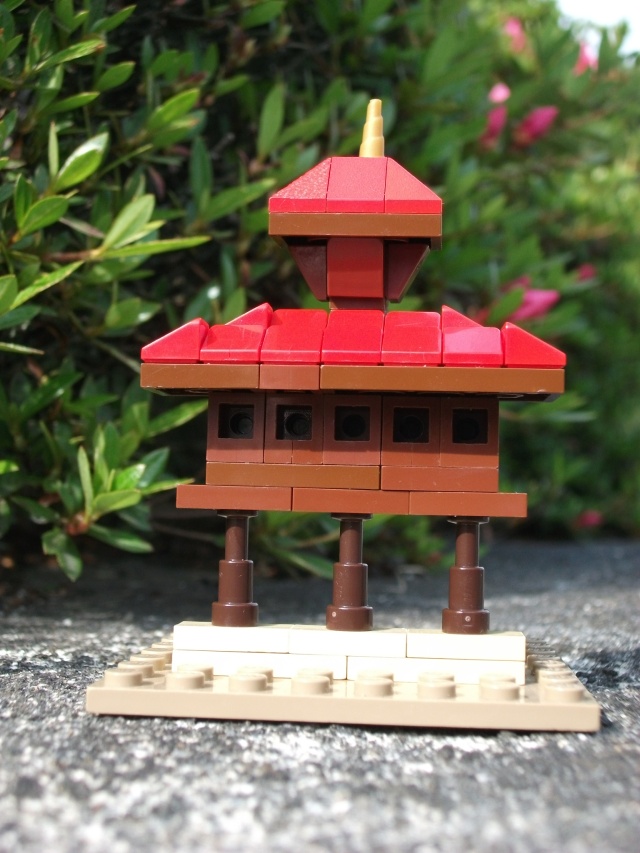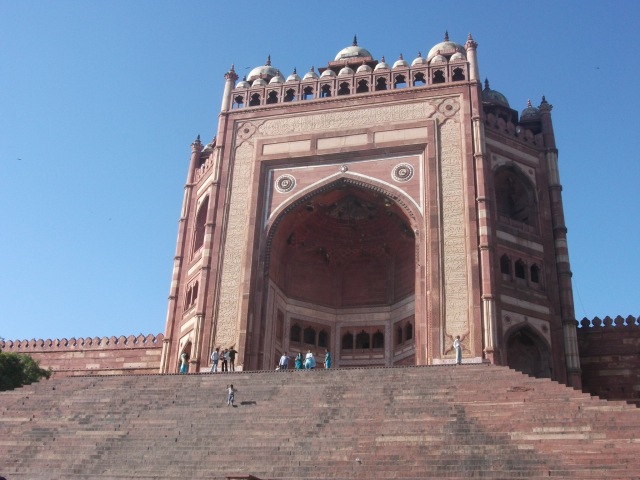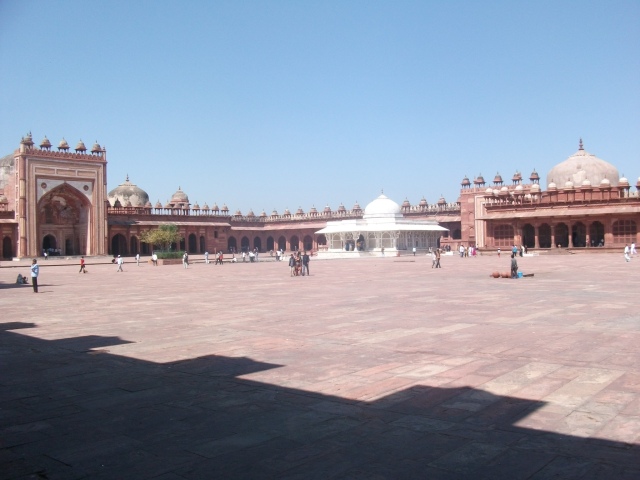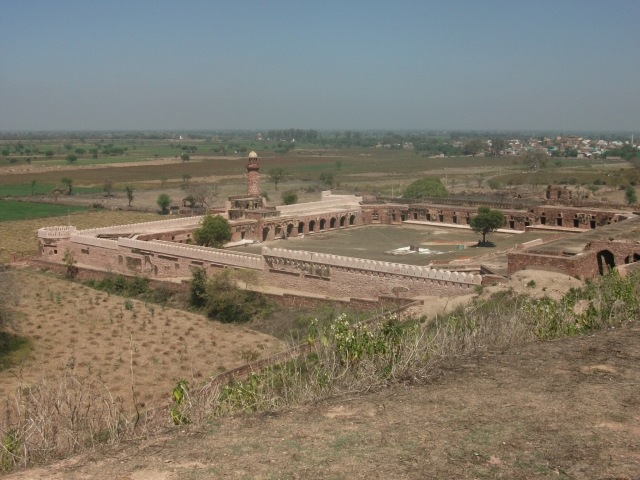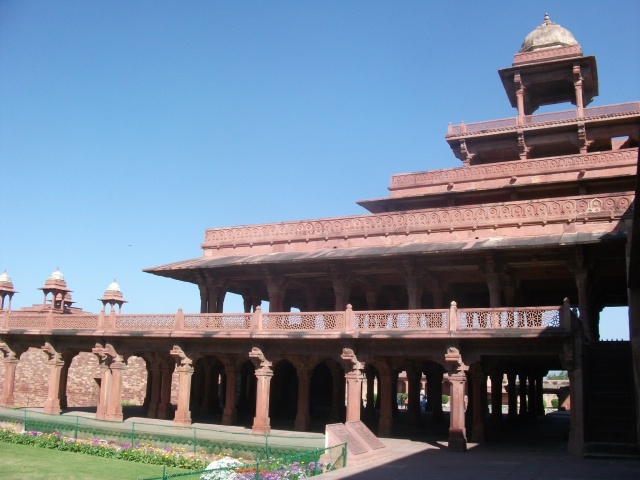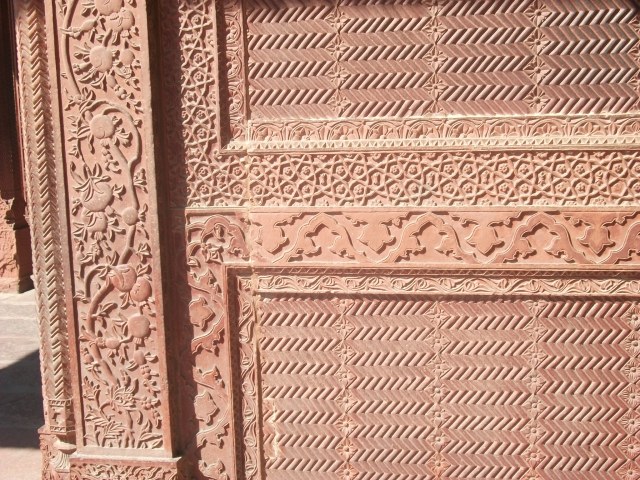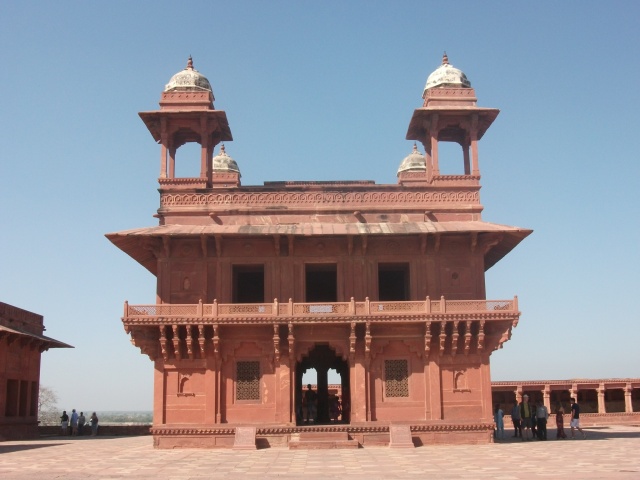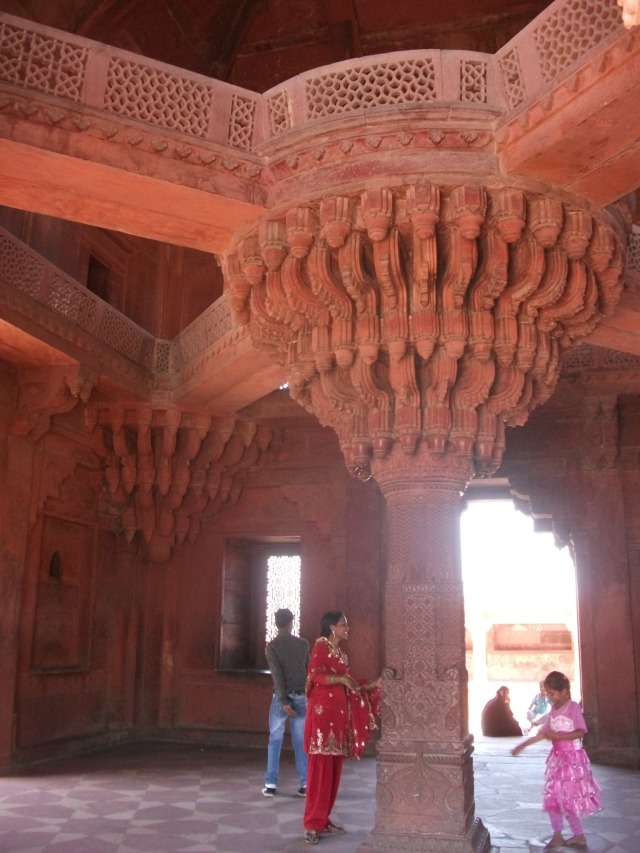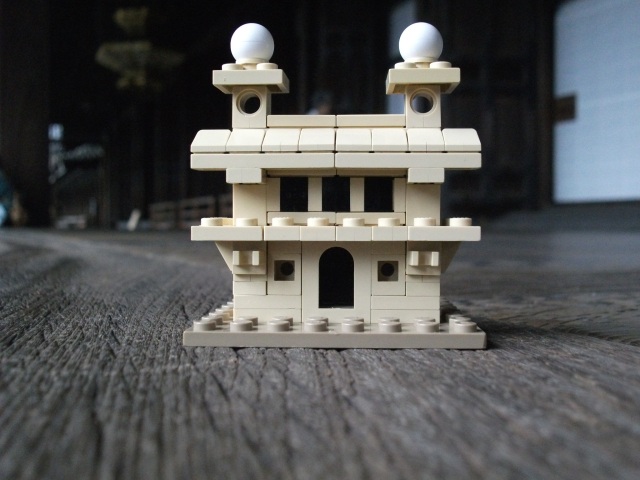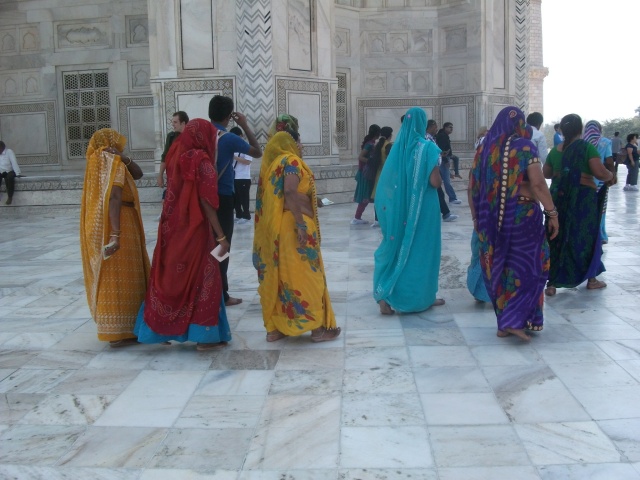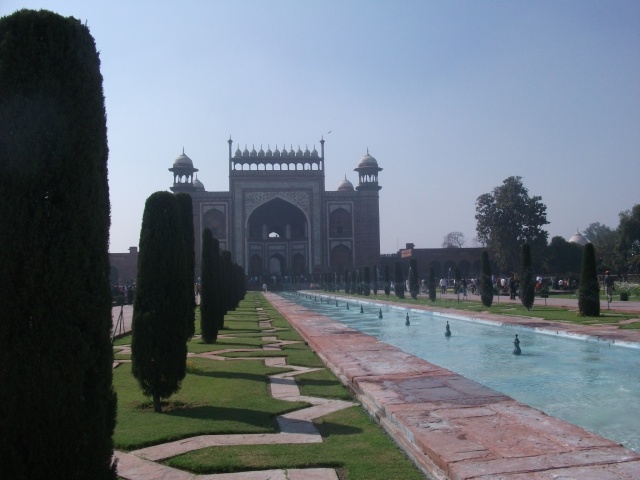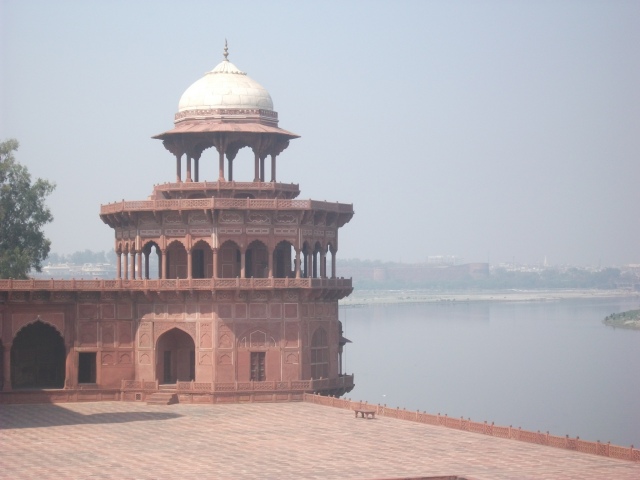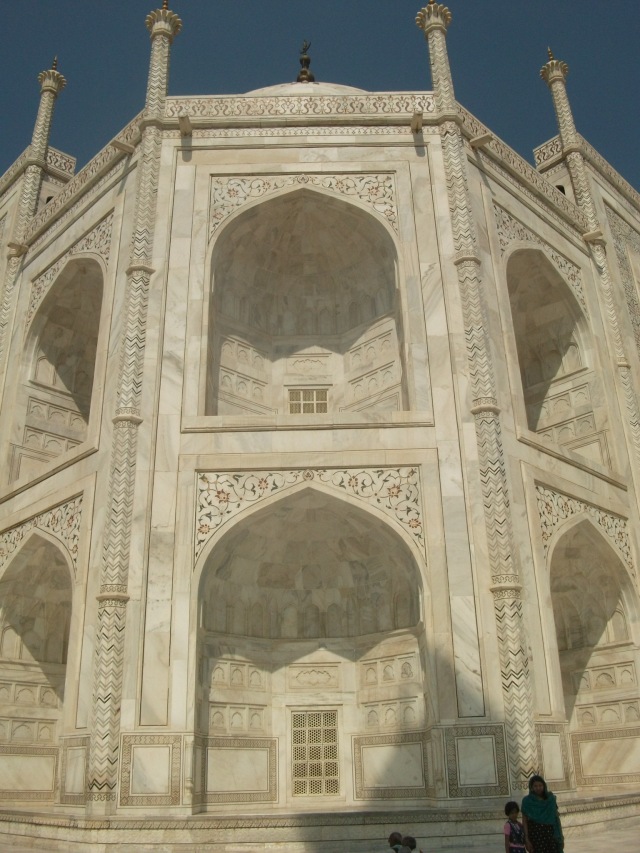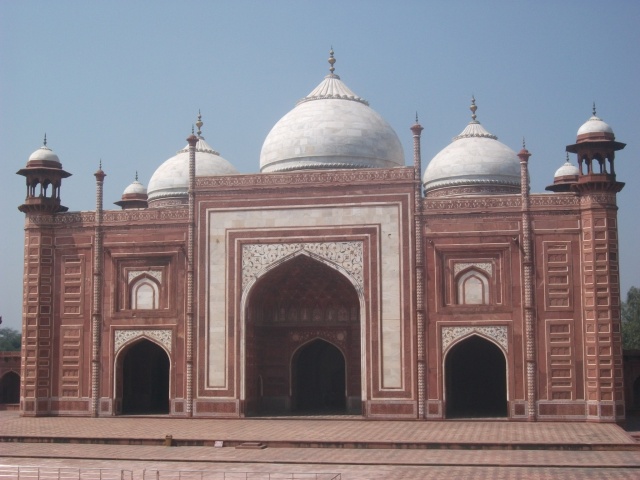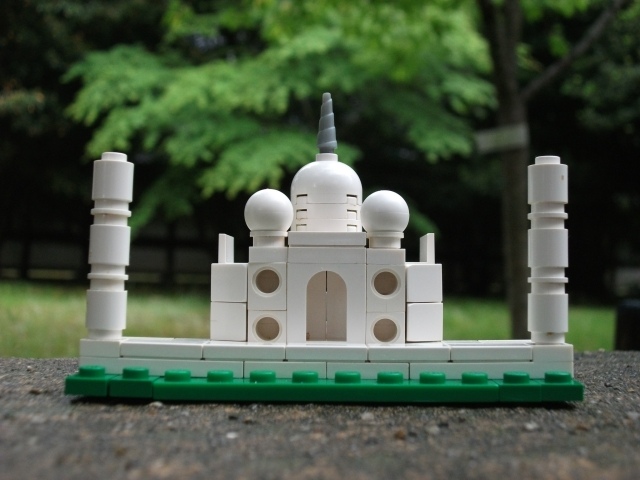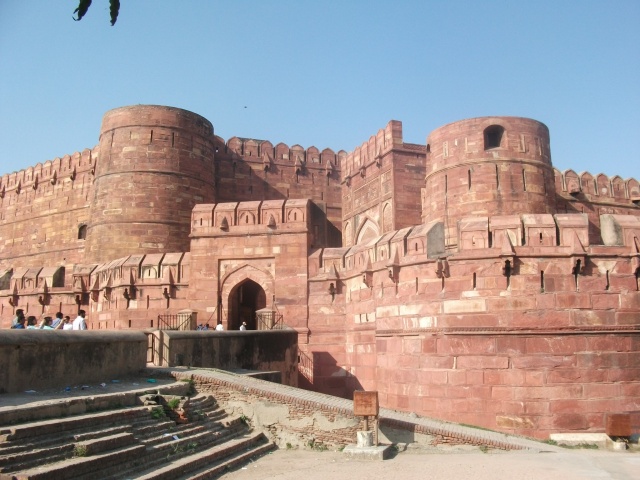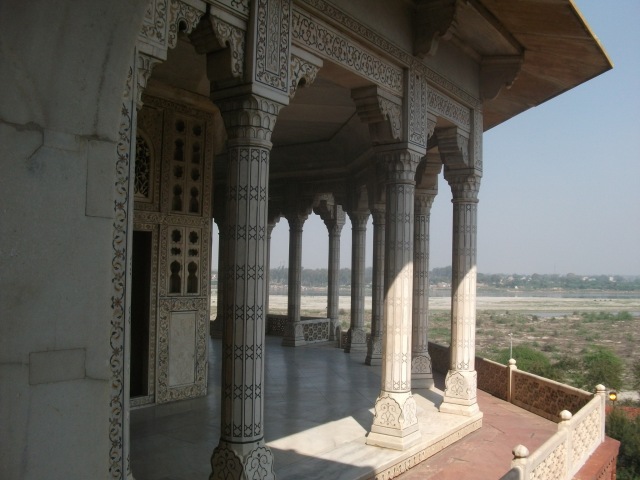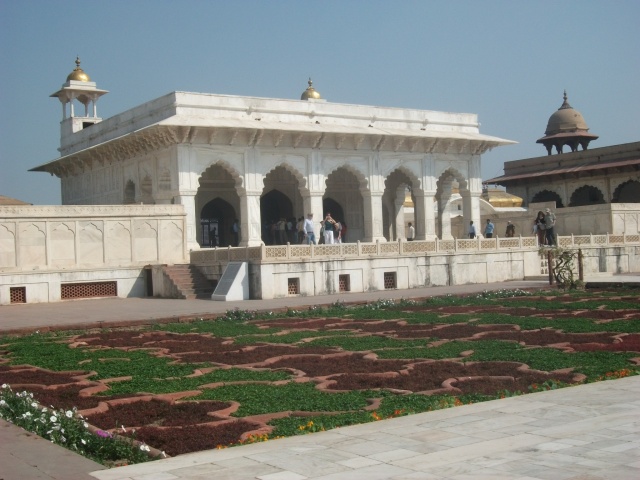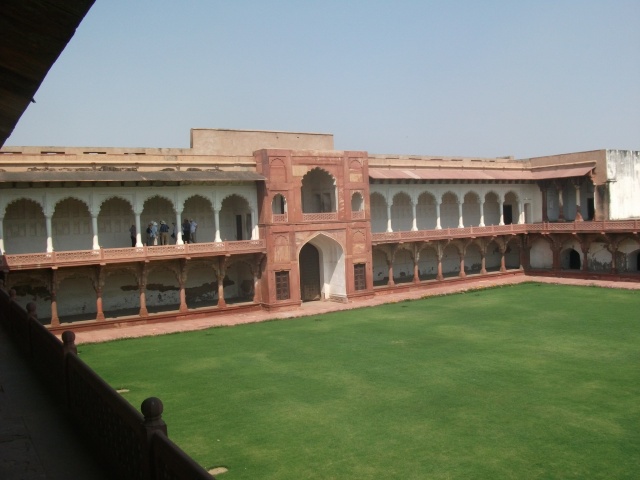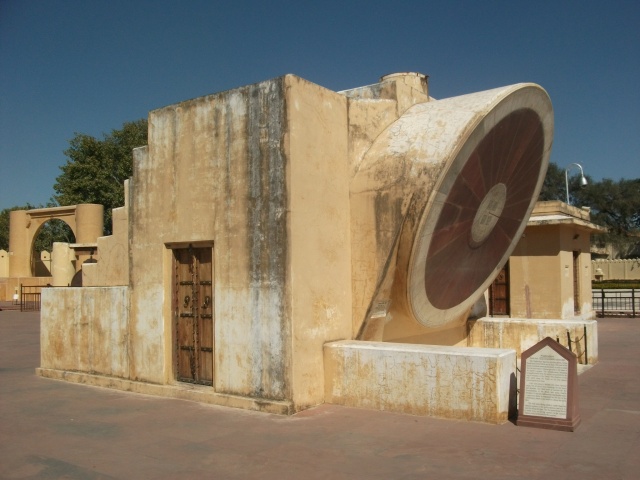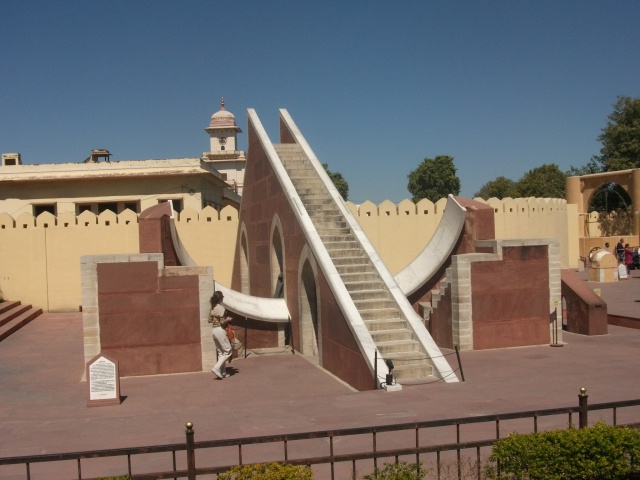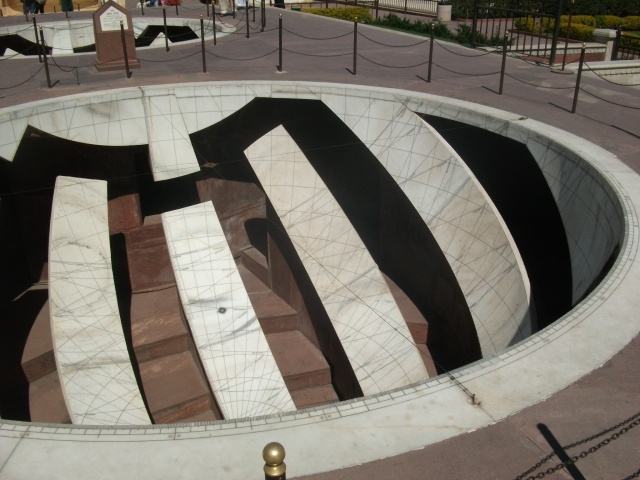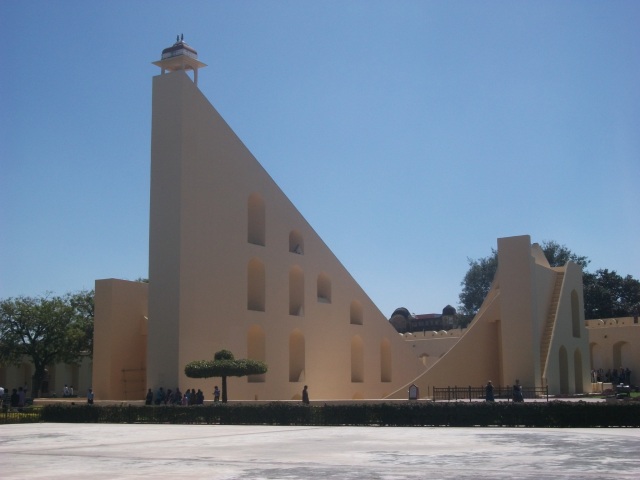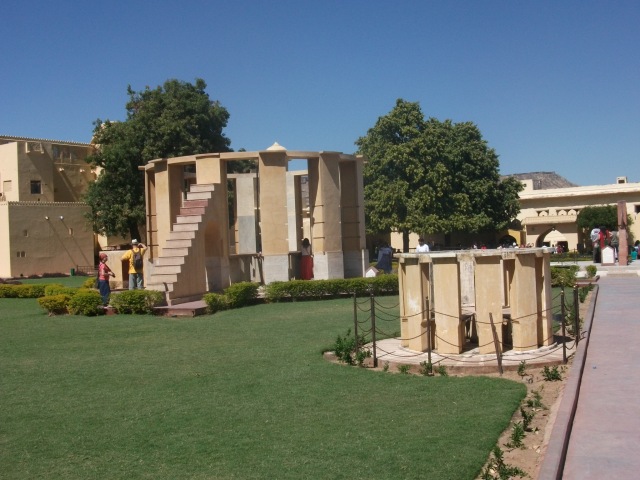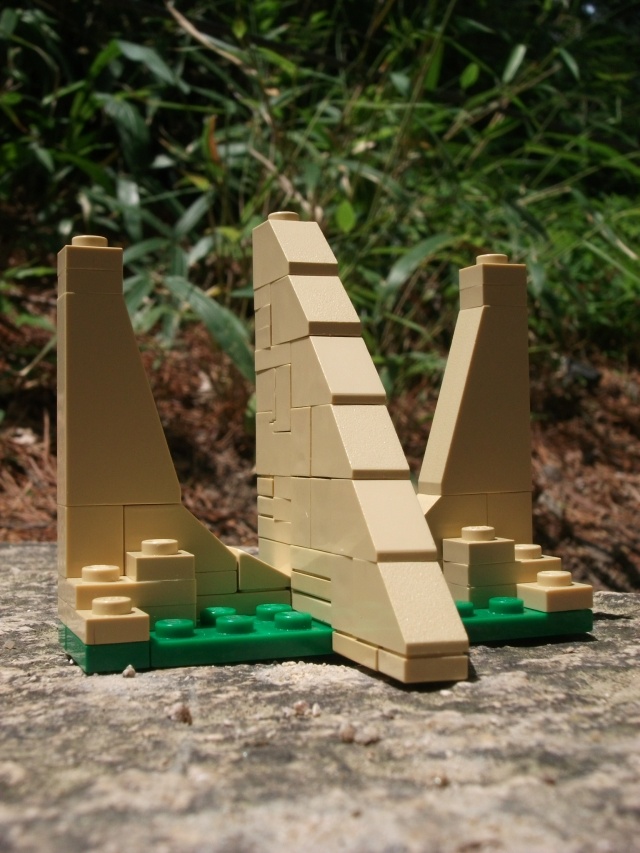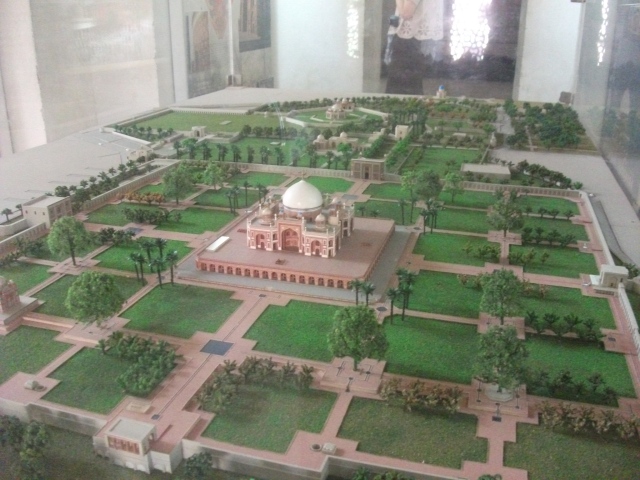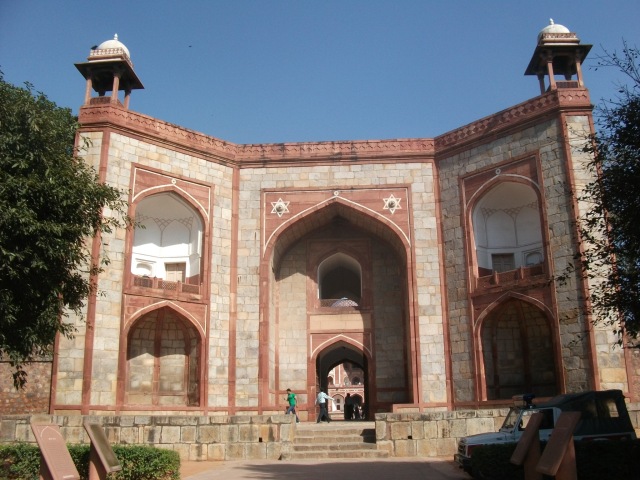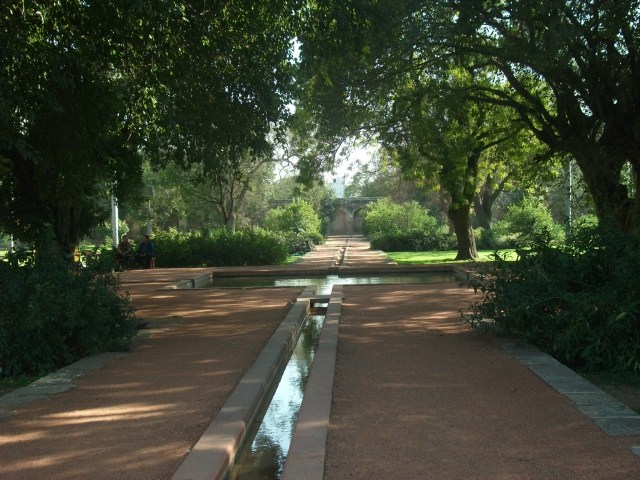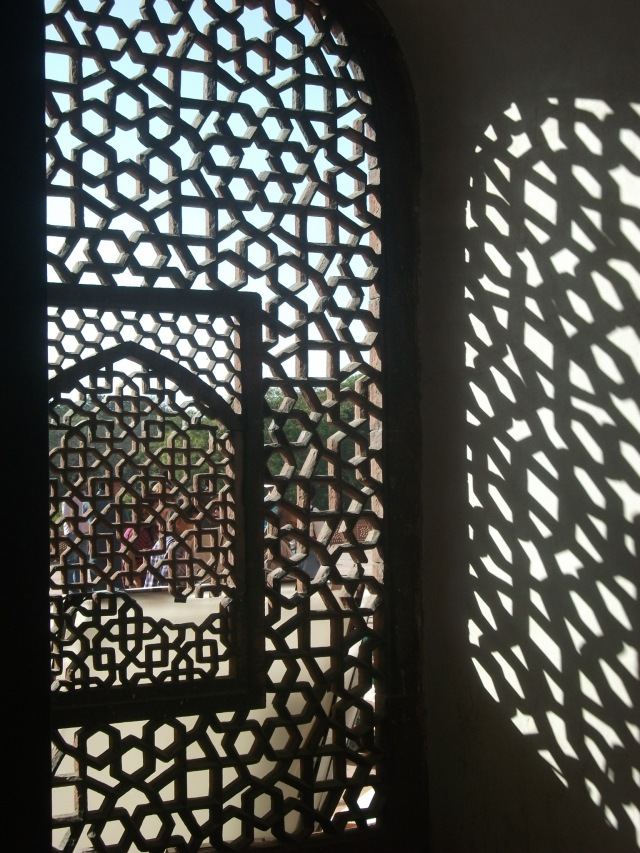These are a group of Hindu (mainly) and Jain temples in a small town eight and a half hours by train from Agra. Well, that’s what the timetable said. We arrived two and a half hours late and I was pleasantly surprised to find that my pre-booked hotel had sent a taxi to fetch me. The tuk-tuk driver I’d just negotiated a price with was less pleased.
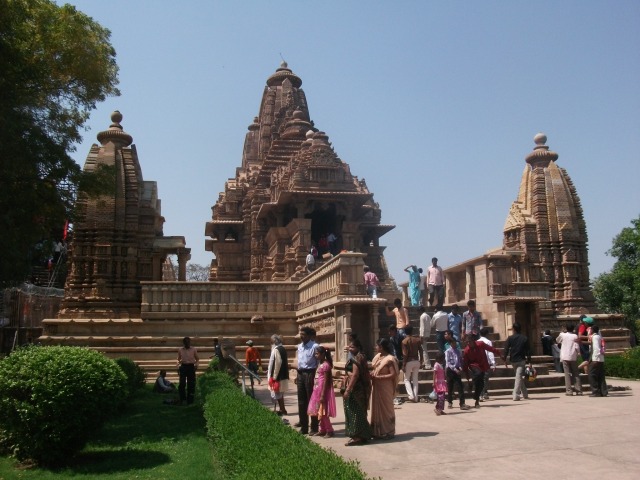
Khajuraho
I suspect that despite the huge appeal of these monuments to tourists (which I’ll get to in a moment), this is usually a fairly peaceful town. I however had managed to arrive on the eve of a large Hindu festival, the Maha Shivratri, celebrating the marriage of the god Shiva to Parvati. Khajuraho is a popular location for this celebration and large numbers of devotees descend on the place to make offerings at one particular temple and, it seems, go on fun fair rides.
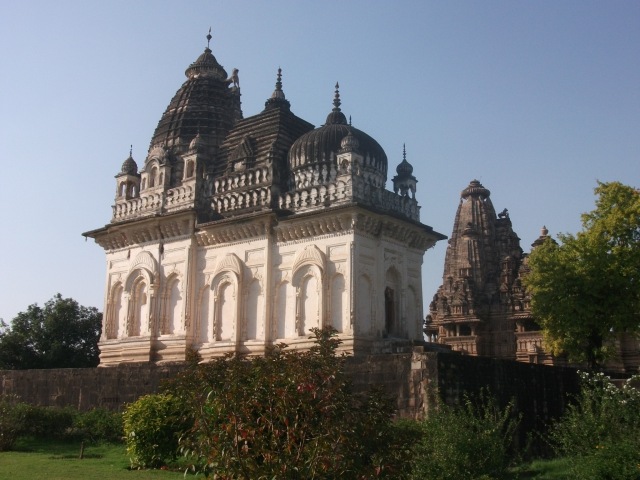
Khajuraho
The next morning, I somehow failed to find the entrance to the main monument park in the centre of town and instead got directed with the pilgrims round the back of some buildings and into a holding pen for people queuing up to perform their puja (offering ritual). They were all clutching small metal pots of water, most with some greenery in it, and pushing up against metal gates (which it later transpired opened outwards) guarded by bamboo stave wielding policemen.
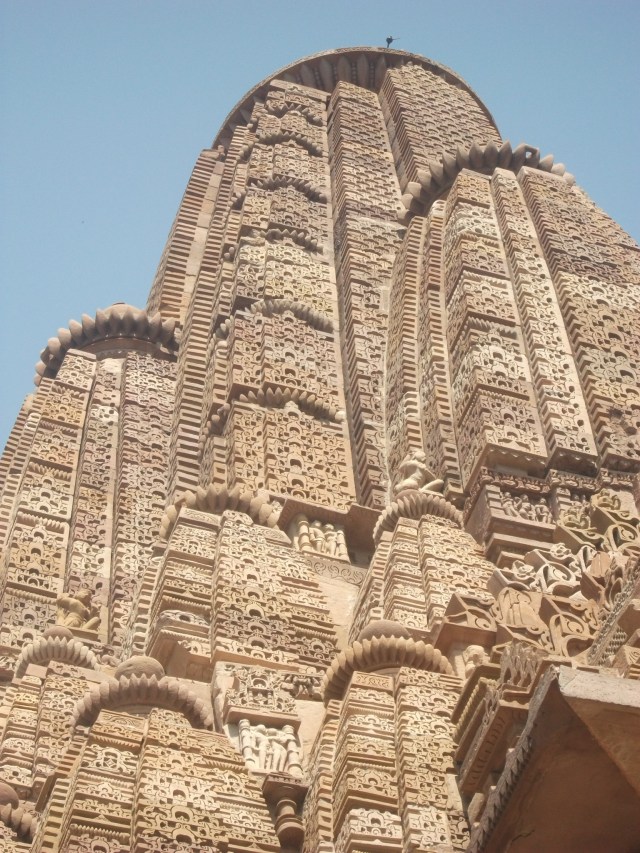
Khajuraho – architectural detail
I soon realised that I did not want to be there, particularly with remembered news stories of people trampled to death in similar circumstances rolling round my mind. But with the crowd crushing in behind me it was impossible to get out. So I had to carry on queuing, and fighting not to get knocked over every time the crowd pushed forward or was beaten back again by the police.

Khajuraho – worshippers queuing up the steps of the temple
Finally, the gates were opened (after much unwilling shuffling backwards by the people at the front) and I got in, only to join another, albeit less pushy, queue. Eventually, after an hour, I got into the tiny temple compound and managed to bypass the queue up the steps to the sanctuary and escape. And then I found the correct entrance to the monuments next door. Phew!
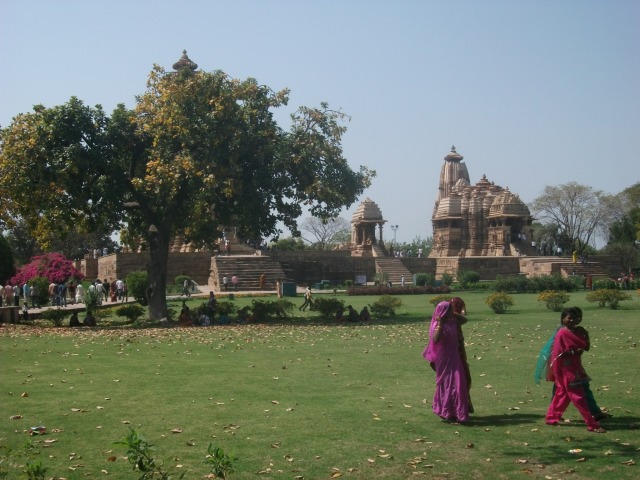
Khajuraho
After that brief side adventure, the main group of monuments was a delight to visit, set in beautifully kept grounds, with wide paths, lawns and English signage. And why are these temples so popular? Because they are the ones with the famous erotic sculptures. You know the ones.
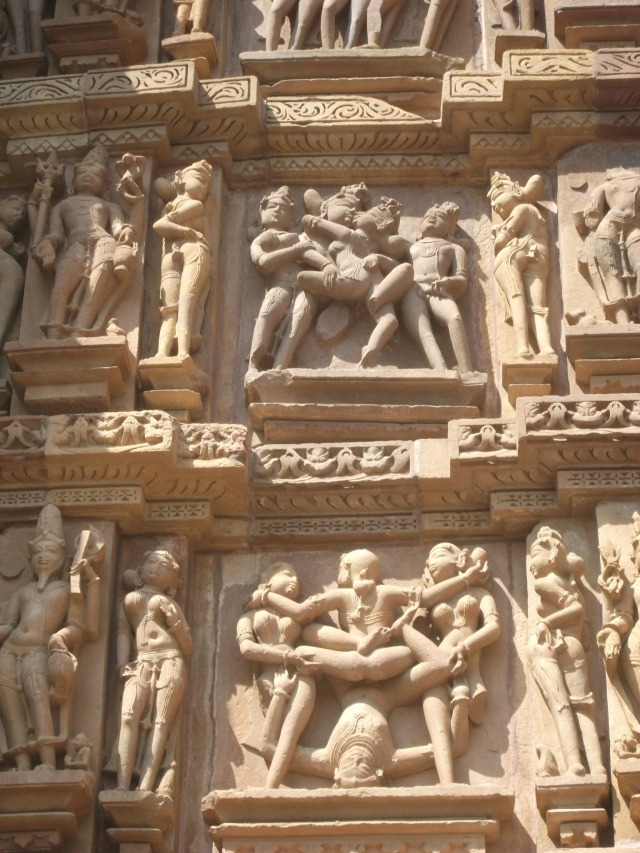
Khajuraho – sculpture
Built between 950 and 1050AD, only twenty-two temples remain of the eighty-five known to have been built in what was then a capital of the Chandela dynasty, a central Indian clan.

Khajuraho – sculpture
The architecture is, according to UNESCO, “highly original” and is constructed of un-mortared sandstone blocks, many of great size. The exteriors are densly covered in excellent carvings, some of which, on one or two temples in particular, depict what a TV announcer might call scenes of a sexual nature. The UNESCO listing is more circumspect, referring to “scenes of amusements of which not the least known are the scenes, susceptible to various interpretations, sacred or profane”.*

Khajuraho – sculpture
What that convoluted sentence refers to is the variation in opinion as to what the naughty carvings actually mean. They could be a depiction of tantric sex and the cosmic joining of male and female energy; they may have been intended to be educational and some could just be part of the depiction of everyday life, along with other mundane subjects pictured. Quite how the man shagging a horse fits into any of these theories though, I can’t say.

Khajuraho – sculpture
I was not going to attempt a Lego depiction of tantric (or otherwise) sex, so that left a temple for my model. After wrestling for some hours trying to build this:

Khajuraho
I finally had to admit I didn’t have enough parts and moved my viewpoint 90° round to the left and built the end view of the towering structure over the temple sanctuary, a view similar to this.
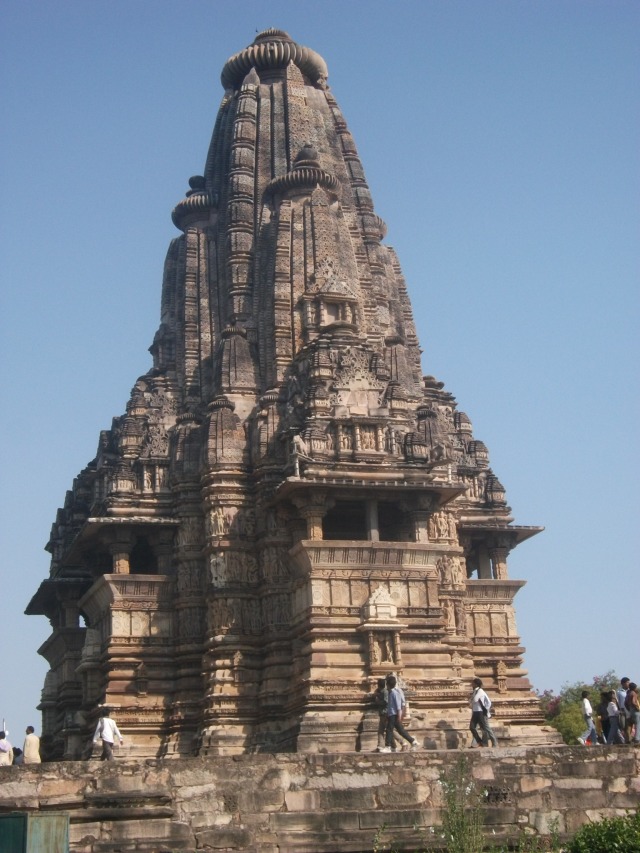
Khajuraho
It might look like a simple model, but it was remarkably tricky to build.
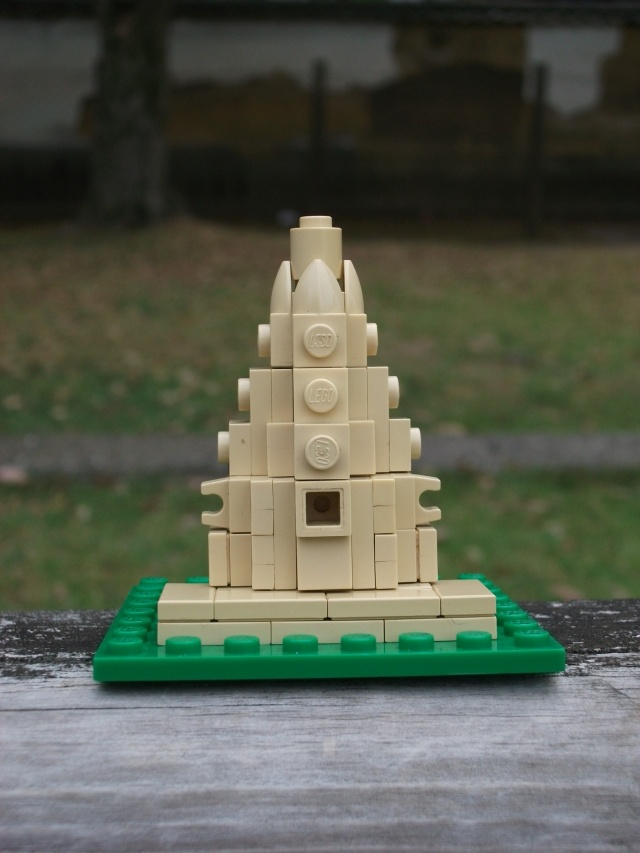
Lego Khajuraho
* Actually, it does mention sex later, but I just love that sentence so much I had to share it.

